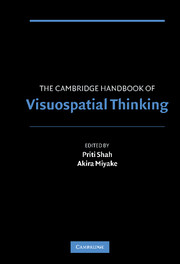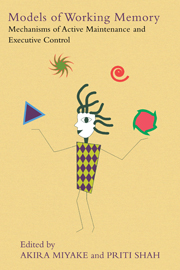24 results
Severe Influenza in 33 US Hospitals, 2013–2014: Complications and Risk Factors for Death in 507 Patients
-
- Journal:
- Infection Control & Hospital Epidemiology / Volume 36 / Issue 11 / November 2015
- Published online by Cambridge University Press:
- 30 July 2015, pp. 1251-1260
- Print publication:
- November 2015
-
- Article
- Export citation
11 - The Comprehension of Quantitative Information in Graphical Displays
-
-
- Book:
- The Cambridge Handbook of Visuospatial Thinking
- Published online:
- 05 June 2012
- Print publication:
- 18 July 2005, pp 426-476
-
- Chapter
- Export citation
Subject Index
-
- Book:
- The Cambridge Handbook of Visuospatial Thinking
- Published online:
- 05 June 2012
- Print publication:
- 18 July 2005, pp 531-561
-
- Chapter
- Export citation
List of Contributors
-
-
- Book:
- The Cambridge Handbook of Visuospatial Thinking
- Published online:
- 05 June 2012
- Print publication:
- 18 July 2005, pp vii-x
-
- Chapter
- Export citation
Acknowledgments
-
- Book:
- The Cambridge Handbook of Visuospatial Thinking
- Published online:
- 05 June 2012
- Print publication:
- 18 July 2005, pp xvii-xviii
-
- Chapter
- Export citation

The Cambridge Handbook of Visuospatial Thinking
-
- Published online:
- 05 June 2012
- Print publication:
- 18 July 2005
The Cambridge Handbook of Visuospatial Thinking - Title page
-
-
- Book:
- The Cambridge Handbook of Visuospatial Thinking
- Published online:
- 05 June 2012
- Print publication:
- 18 July 2005, pp iii-iii
-
- Chapter
- Export citation
Copyright page
-
- Book:
- The Cambridge Handbook of Visuospatial Thinking
- Published online:
- 05 June 2012
- Print publication:
- 18 July 2005, pp iv-iv
-
- Chapter
- Export citation
Author Index
-
- Book:
- The Cambridge Handbook of Visuospatial Thinking
- Published online:
- 05 June 2012
- Print publication:
- 18 July 2005, pp 509-530
-
- Chapter
- Export citation
Contents
-
- Book:
- The Cambridge Handbook of Visuospatial Thinking
- Published online:
- 05 June 2012
- Print publication:
- 18 July 2005, pp v-vi
-
- Chapter
- Export citation
The Cambridge Handbook of Visuospatial Thinking - Half title page
-
- Book:
- The Cambridge Handbook of Visuospatial Thinking
- Published online:
- 05 June 2012
- Print publication:
- 18 July 2005, pp i-ii
-
- Chapter
- Export citation
Preface
-
-
- Book:
- The Cambridge Handbook of Visuospatial Thinking
- Published online:
- 05 June 2012
- Print publication:
- 18 July 2005, pp xi-xvi
-
- Chapter
- Export citation
Anaesthesia for electroconvulsive therapy: a role for etomidate
-
- Journal:
- Psychiatric Bulletin / Volume 26 / Issue 9 / September 2002
- Published online by Cambridge University Press:
- 02 January 2018, pp. 351-353
- Print publication:
- September 2002
-
- Article
-
- You have access
- Open access
- HTML
- Export citation

Models of Working Memory
- Mechanisms of Active Maintenance and Executive Control
-
- Published online:
- 05 June 2012
- Print publication:
- 13 April 1999
Ode on Working Memory
-
- Book:
- Models of Working Memory
- Published online:
- 05 June 2012
- Print publication:
- 13 April 1999, pp xviii-xviii
-
- Chapter
- Export citation
Dedication
-
- Book:
- Models of Working Memory
- Published online:
- 05 June 2012
- Print publication:
- 13 April 1999, pp xii-xii
-
- Chapter
- Export citation
1 - Models of Working Memory: An Introduction
-
-
- Book:
- Models of Working Memory
- Published online:
- 05 June 2012
- Print publication:
- 13 April 1999, pp 1-27
-
- Chapter
- Export citation
13 - Toward Unified Theories of Working Memory: Emerging General Consensus, Unresolved Theoretical Issues, and Future Research Directions
-
-
- Book:
- Models of Working Memory
- Published online:
- 05 June 2012
- Print publication:
- 13 April 1999, pp 442-482
-
- Chapter
- Export citation
Subject Index
-
- Book:
- Models of Working Memory
- Published online:
- 05 June 2012
- Print publication:
- 13 April 1999, pp 494-506
-
- Chapter
- Export citation
Name Index
-
- Book:
- Models of Working Memory
- Published online:
- 05 June 2012
- Print publication:
- 13 April 1999, pp 483-493
-
- Chapter
- Export citation



